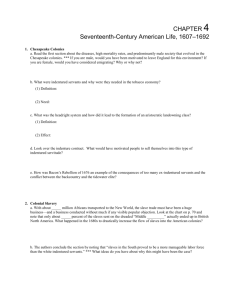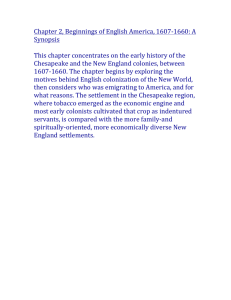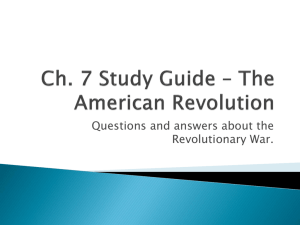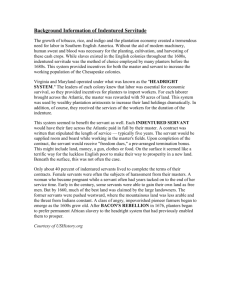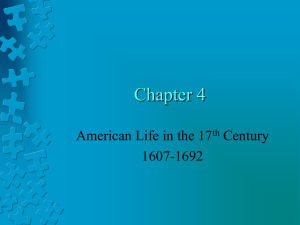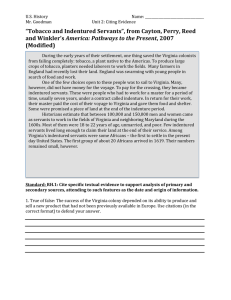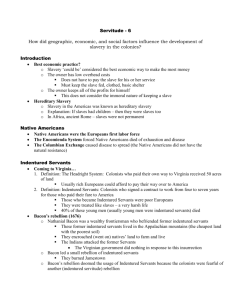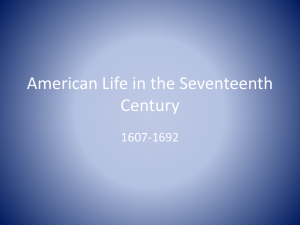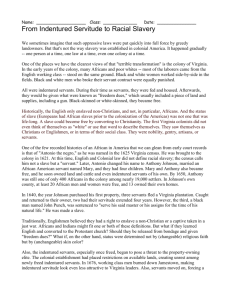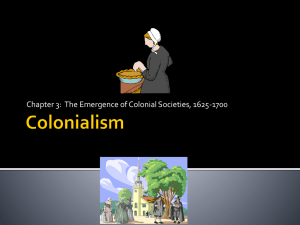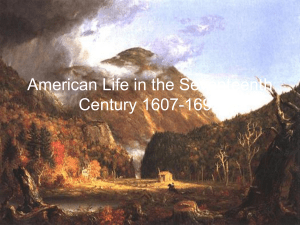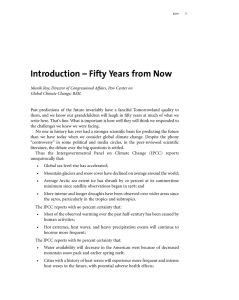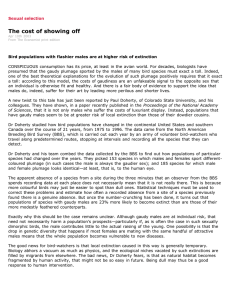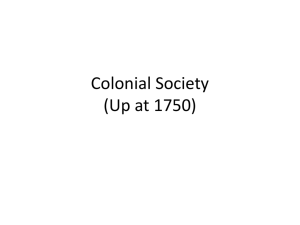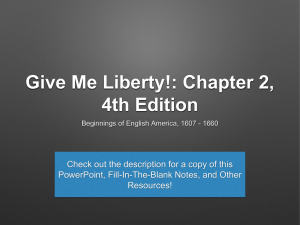01 New England v Chesapeake Society
advertisement
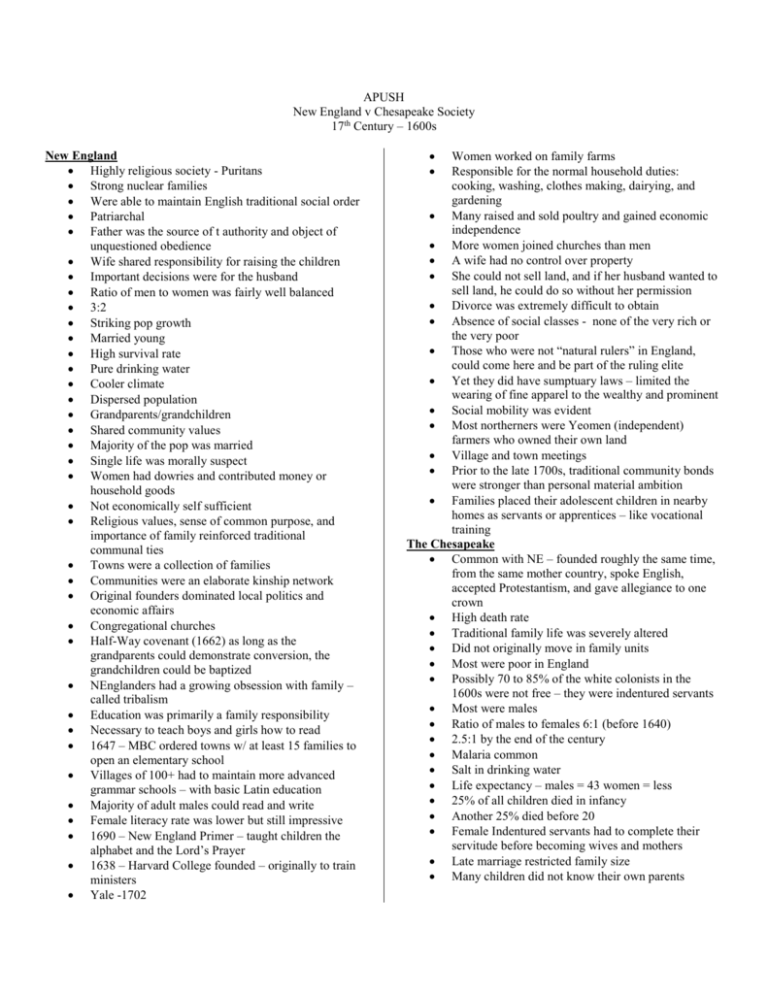
APUSH New England v Chesapeake Society 17th Century – 1600s New England Highly religious society - Puritans Strong nuclear families Were able to maintain English traditional social order Patriarchal Father was the source of t authority and object of unquestioned obedience Wife shared responsibility for raising the children Important decisions were for the husband Ratio of men to women was fairly well balanced 3:2 Striking pop growth Married young High survival rate Pure drinking water Cooler climate Dispersed population Grandparents/grandchildren Shared community values Majority of the pop was married Single life was morally suspect Women had dowries and contributed money or household goods Not economically self sufficient Religious values, sense of common purpose, and importance of family reinforced traditional communal ties Towns were a collection of families Communities were an elaborate kinship network Original founders dominated local politics and economic affairs Congregational churches Half-Way covenant (1662) as long as the grandparents could demonstrate conversion, the grandchildren could be baptized NEnglanders had a growing obsession with family – called tribalism Education was primarily a family responsibility Necessary to teach boys and girls how to read 1647 – MBC ordered towns w/ at least 15 families to open an elementary school Villages of 100+ had to maintain more advanced grammar schools – with basic Latin education Majority of adult males could read and write Female literacy rate was lower but still impressive 1690 – New England Primer – taught children the alphabet and the Lord’s Prayer 1638 – Harvard College founded – originally to train ministers Yale -1702 Women worked on family farms Responsible for the normal household duties: cooking, washing, clothes making, dairying, and gardening Many raised and sold poultry and gained economic independence More women joined churches than men A wife had no control over property She could not sell land, and if her husband wanted to sell land, he could do so without her permission Divorce was extremely difficult to obtain Absence of social classes - none of the very rich or the very poor Those who were not “natural rulers” in England, could come here and be part of the ruling elite Yet they did have sumptuary laws – limited the wearing of fine apparel to the wealthy and prominent Social mobility was evident Most northerners were Yeomen (independent) farmers who owned their own land Village and town meetings Prior to the late 1700s, traditional community bonds were stronger than personal material ambition Families placed their adolescent children in nearby homes as servants or apprentices – like vocational training The Chesapeake Common with NE – founded roughly the same time, from the same mother country, spoke English, accepted Protestantism, and gave allegiance to one crown High death rate Traditional family life was severely altered Did not originally move in family units Most were poor in England Possibly 70 to 85% of the white colonists in the 1600s were not free – they were indentured servants Most were males Ratio of males to females 6:1 (before 1640) 2.5:1 by the end of the century Malaria common Salt in drinking water Life expectancy – males = 43 women = less 25% of all children died in infancy Another 25% died before 20 Female Indentured servants had to complete their servitude before becoming wives and mothers Late marriage restricted family size Many children did not know their own parents

